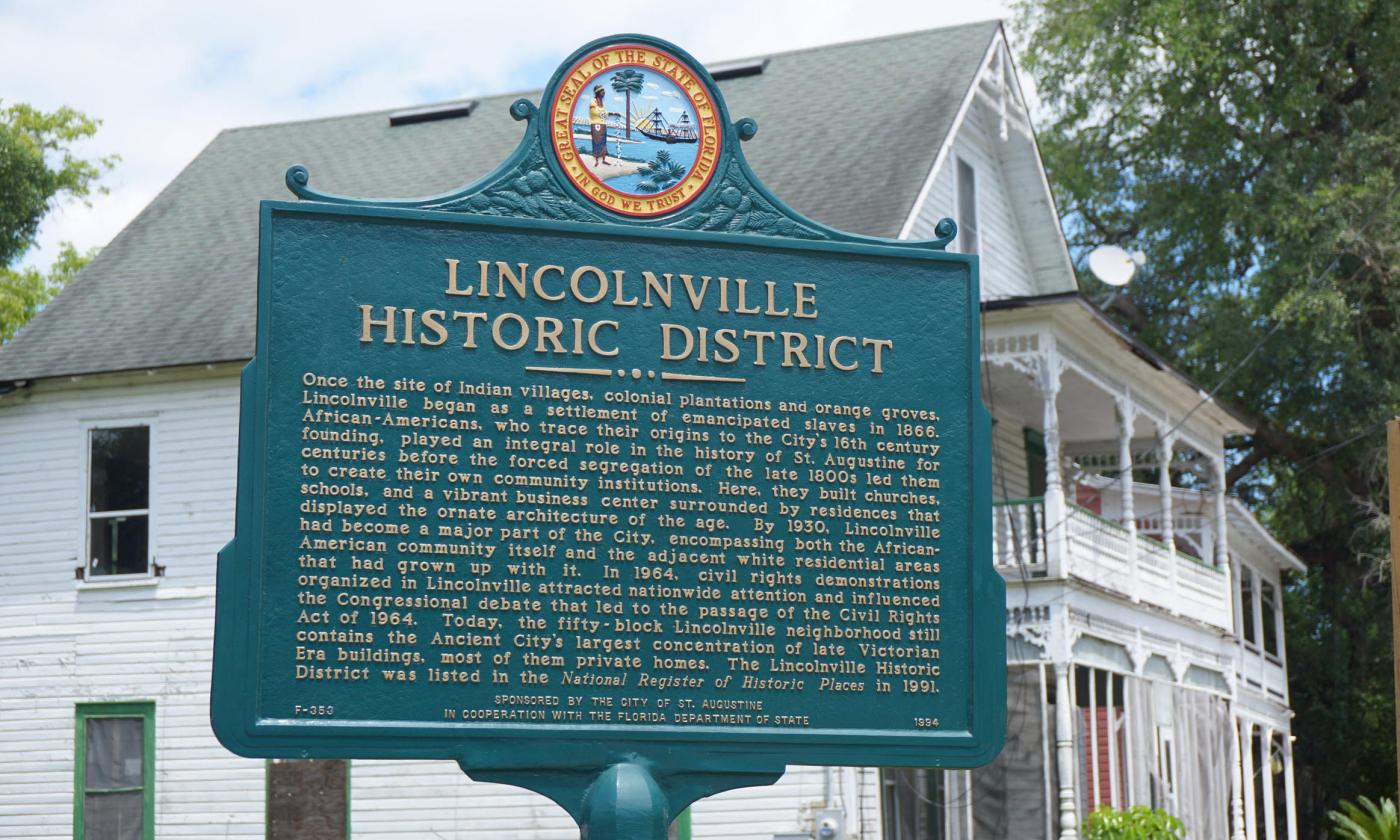Lincolnville Neighborhood
Lincolnville Neighborhood
Before it was "Lincolnville"
Archaeological evidence shows that this 50-block region south of King Street has a history that dates back to pre-colonial times. Before the Civil War (1861-1865), the area was mostly orange plantations and marshlands.
The Union Takes St. Augustine
In February of 1862, Confederate troops abandoned the city of St. Augustine. The U.S. Army took control for the rest of the war.
On January 1st, 1863, President Abraham Lincoln issued the Emancipation Proclamation. According to the Florida State Archives, about 672 people in St. Augustine were freed from slavery that day.
At the end of the Civil War, some of these freedmen moved south of King Street and rented or bought land that was once plantations. For at least a decade, this neighborhood was called "Africa" or "Little Africa" by tourists and locals. But the name "Lincolnville" was quick to catch on.
Reconstruction: An Era of Hope
After the Civil War ended, America entered a progressive era called Reconstruction (1864-1877). Slavery was abolished, and society was changing.
Now officially American citizens, Lincolnville's residents built homes, churches, and businesses and started voting in elections. Florida even elected Josiah T. Walls, formerly enslaved, to Congress. Several of Lincolnville's leaders were also elected to political positions.
Life During Segregation
As former Confederate supporters regained power, Reconstruction ended. During the years that followed, called the Jim Crow Era (1877-1960), Florida and other states restricted African American civil rights and enforced racial segregation. In St. Augustine, White and Black citizens lived and worked closely together to maintain the town's tourist economy. However, African Americans were still considered second-class citizens.
Lincolnville turned inward to build a safe community, and Black-owned businesses became vital to the neighborhood's survival. Grocery stores, pharmacies, and active social clubs were founded in Lincolnville. St. Augustine's first public school for Black students — originally called School #2 — opened its doors in 1901.
The Roaring '20s
By the 1920s, Lincolnville's citizens had established a thriving economy with a population of middle-class African Americans. Washington Street became the backbone of the neighborhood's business district.
Religion and education were cornerstones of life in Lincolnville. The Florida State Archives report at least 16 churches being active by the 1920s. In 1925, Colored School #2 was rebuilt to accommodate its growing student population, and in 1928, it was renamed Excelsior High School.
St. Augustine's Civil Rights Movement
Lincolnville became a center of activity during the 1960s Civil Rights Movement. Lincolnville residents (especially the youth) were on the front lines of early Civil Rights demonstrations. Led by Dr. Robert B. Hayling, their commitment attracted Dr. Martin Luther King and the Southern Christian Leadership Conference (SCLC) to St. Augustine in 1963 and 1964.
Several places in Lincolnville are significant to Civil Rights history. St. Paul AME was a gathering place for activists of all races. Dr. King stayed the night in a few of the homes in Lincolnville and hosted planning sessions in the rectory at St. Benedict the Moor Catholic Church.
Visiting the Lincolnville Historic District
Lincolnville Historic District was added to the National Register of Historic Places in 1991. Though it is primarily a residential neighborhood, the region has several restaurants and attractions. The Lincolnville Museum and Cultural Center and the ACCORD Civil Rights Museum regularly welcome guests. Historic markers provide detailed information throughout the district.
Several homes within Lincolnville are historically significant and may boast historic markers, but these are still privately owned. As you explore the neighborhood, please remain respectful of its residents.
Resources
Online Resources
Delve into Lincolnville's past on the "Unearthed Treasures of Lincolnville" digital exhibit by tapping here.
Read “The Forgotten History of Lincolnville,” an article on the Florida Memory website by tapping here.
Read about the Lincolnville Historic District on the National Park Service website by tapping here.
Explore current events and new exhibits on the Lincolnville Museum and Cultural Center's website by tapping here.
Further Reading
St. Augustine, Florida, 1963-1964: Mass Protest and Racial Violence, edited by David Garrow
The Awakening of St. Augustine, by Thomas Graham
The Houses of St. Augustine, Florida, by David Nolan


